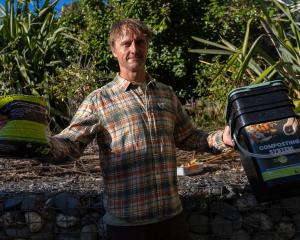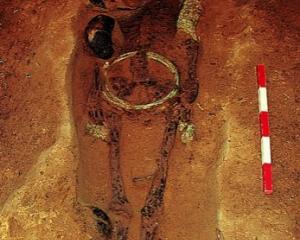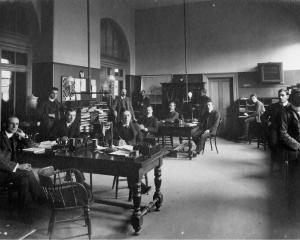There are no sheep, pigs or rats there and native birds, animals, insects and plants live together in harmony.
This is Campbell Island, a wind-torn, oft snow-covered, grassy, wet piece of rock in the Southern Ocean, and the main breeding ground for the Southern Royal Albatross.
We have come here with the Royal New Zealand Navy, which is delivering a scientific team for a nine-week expedition on the island and bringing staff from the Department of Conservation, MetService and Ministry of Fisheries on HMNZS Otago and HMNZS Wellington's first passage to the Southern Ocean, where they will spend significant periods of their future lives patrolling the waters.
Taking the opportunity to inspect the island and the Government's new $110 million investments are the Governor-General, Sir Anand Satyanand, his wife, Susan, Lady Satyanand, and the Minister of Conservation, Kate Wilkinson.
They are staying in the well-appointed cabins aboard ship. The cabins even have en-suites.

From the harbour several buildings can be seen, including a long, basic accommodation block belonging to MetService.
Next to it is a building belonging to Doc, inside the kitchen of which a potbelly stove merrily chugs away.
It is the only source of heat on the powerless island, and those sleeping in the basic accommodation often remain fully clothed inside their sleeping bags in their attempts to keep the cold out.
On the hills and beaches, sea lions, some surprisingly far from water, make their presence felt to would-be intruders, and on the hillsides strange plants grow juicy and green, displaying a bright flower and foliage one would not believe possible in this part of the world.
The removal of sheep, cattle and rats from the island in recent years has led to a dramatic regeneration of the vegetation and wildlife.
This regrowth is something which Dr Colin Meurck, who has been visiting the Campbell Island group on and off or 42 years, finds awesome.
He reckons he has crawled over most of the island in his time. But it has been a long time between visits for the ecologist, who now works at Lincoln University.
The last time he went was in 1998. He notices a difference.
The trends established after the removal of the sheep have continued.
The scrub is growing thicker, the snow grasses are getting bigger and the megaherbs (herbaceous perennial wild flowers characterised by their great size, with huge leaves and very large and often unusually coloured flowers) are becoming increasingly re-established.
And, since the rats were removed, the return of smaller birds like the snipe and burrowing petrel has begun.
Now the small, light-brown birds flit from tree to tree across the island.
But the main indicator of the removal of rats was the increase in large insects; for example, the Campbell Island weta.
Dr Meurck expects to see the number of insects, like the weta, continue to increase, until the birdlife is numerous enough to start affecting their numbers.
He has returned to the island this time to lead the Campbell Island Bicentennial Expedition.
The team of 15 scientists will spend nine weeks on the island studying everything from the ecology to its cultural history over the past 200 years of occupation.
Specifically, Dr Meurck will be leading the terrestial ecology team.
Part of the team's brief will be to look at photos from the late 1880s and take photos of the same scenes, record and monitor the human impact on tracks and the general human experience on the island, which is often visited by researchers, conservationists and tourists.
They will also look at what effect seaborn nutrients have on plant life on the island, the reducing food supply for penguins and how global warming is affecting water circulation and food supply.
And these mainly Christchurch folk are not alone here.
On our arrival at Campbell Island, Otago University botanist Dr Janice Lord was waiting to greet us.
She had spent two weeks on the island with PhD student Lorna Little, who is studying colour in subantarctic and subarctic plants.
Although the pair were disappointed to be leaving just before the megaherbs burst into full flower, they were happy enough at least to have been treated to an early display of many of the unusual flowering plants.
Surprising numbers of tourists are making their way to this difficult-to-reach destination - Doc issues 1100 permits a year to people wishing to take a walk along the boardwalk which rises up through the megaherb fields, past the nesting albatrosses.
Most arrive on cruise ships on their way to or from the Antarctic.
And then there are the others - two Niwa teams were on the island when we visited, one studying a penguin colony, the other albatrosses.
We delivered 15 researchers and picked up Dr Lord, Ms Little and two Doc staff who had been on the island for two weeks.
Doc is not of a mind to shut the island off to people, programme manager for the outlying islands Pete McClelland says.
The Campbell Islands are unique, recognised nationally and internationally and have been designated a world heritage area.
Potentially, the island's flora and fauna will continue to gain a stronger foothold, he says.
Doc can help that along by continuing to reintroduce species, as was the case with the Campbell Island teal.
The eradication of pests on Campbell Island is touted as an international success story, which other countries are replicating.
But there are still islands in the subantarctics that remain populated with predators.
Auckland Island has pigs, cats and mice, while the Antipodes Islands have mice.
Pigs swim well and there is a risk they could reach, for example, the pristine Adams Island.
The continued existence of those pests means those islands will never regain their original flora and fauna or gain others.
Also, birds attempting to move between the islands may come to an abrupt end on one of the pest-populated islands.
Total pest eradication from all the islands would cost more than $20 million.
And Mr McClelland says there would be little point in doing the job in parts - it would be best done all at once.
But resources are strongly contested, and $20 million-plus for a conservation project is a big ask.
"We could have teal, snipe, rail, plants - all those things could be improved by eradicating predators.
We would put in place everything we could, but we need the guidance. Doing this is a bigger challenge - it is political and it is financial."
As for more access to other islands, Doc believes it has good balance with the current access to Campbell, Enderby and Auckland Islands.
The others will remain closed to the public, at least for the foreseeable future.
Asked whether this Government would commit the $20 million towards the project, if it was so important, Ms Wilkinson said she would "certainly be open to opportunities as to whether there are more possibilities" to do the work, but it was really each conservancy's decision and they had to set their own priorities.
Meanwhile, the grasses on Campbell Island will continue to grow, bird numbers will slowly creep up and the world will continue to look to the island as a shining example of what can be achieved - with a little effort.
MONDAY: Fears for future of species












